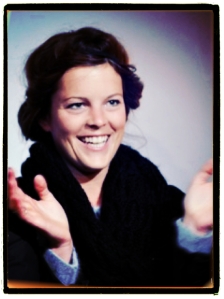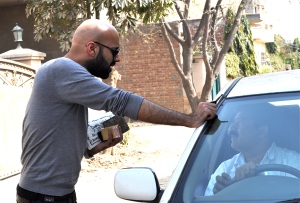From a small farm in Wales, the phenomenally sunny Anna Felton, runs two businesses as well as the occasional marathon. The title of her recent Do lecture says it all: “How do you manage 6 brands, a knitwear company and a flock of sheep? And still have a life.” As someone who grew up on a sheep farm in Cornwall, I’m in awe of her efforts to build vibrant rural economies: with Monkstone, she uses wool from her boyfriend’s family farm to make gorgeous knitwear (who knew it was possible to salivate over a sweater?), while with Dewberry PR, she spreads the word about all the good, beautiful things happening outside of the metropolises. So milkmaids and farmboys, here she is, the one, the only, Anna Felton.
THIS YEAR’S LESSON
That you can never sleep. If you want to make your business work you need to be 100% focused on your brand and ideas. I want to tell the story of farmers and the wool industry even more. You need to think outside the box to be different, personal and beautiful. People remember stories and not facts and this is something I try to work out in marketing strategies all the time. There are so many new brands, you need to stand out. It’s a challenge. But one I love.
THE BURNING QUESTION
I have taken to bread making and I am trying to bake the perfect loaf. But on a work level, my burning question would be to crack time management and to allow myself to be as creative as possible, but not to scare people away. I try to question all that I do, so that I can get better.
THIS YEAR’S MOSTINSPIRINGTHING
It would have to be Sean Carasso Founder of Falling Whistles. At the last Do Lectures, he totally blew me away with his drive and passion. Passion to make a difference by using an incredible brand identity and vision, being supported by friends and creatives, and spreading his love for what he does and the changes he wants to make. It was just awe inspiring.
MAKING THE WHAT-NEXT DECISION
Most of my ideas come to me when driving, something I do a lot with my PR agency. I am lucky as I work for many beautifully minded companies that inspire me to think differently. I pick my projects based on the teams I am asked to meet with and the stories they tell me. I only ever work for companies that I believe in.
In terms of Monkstone, I want to bridge a gap between farmers and creatives. I want to talk to as many UK brands to make them understand the importance of manufacturing in the UK. Later this year, I am launching For Flock Sake; an exciting co operative of farmers, manufactures and businesses. I want to give the wool board a run for their money!





